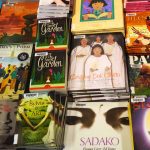Preston Green also has recently highlighted concerns that in voucher-style programs, civil rights protections typically do not follow children from public to private schools.
What’s Ahead for Private School Choice Policy in 2019?
January 9, 2019
Read stories related to faculty experts at UConn’s Neag School of Education.
January 9, 2019
Preston Green also has recently highlighted concerns that in voucher-style programs, civil rights protections typically do not follow children from public to private schools.

January 8, 2019
Emily Tarconish is a Ph.D. candidate in Neag School’s educational psychology program with a concentration in special education. She is a survivor of a traumatic brain injury (TBI) she endured at the age of 15. With years of hard work and rehabilitation, Tarconish has relearned how to walk, speak, and regain basic life functions. Once she completes her Ph.D., she plans to pursue research focused in part on improving access to higher education for college students with TBIs.

January 1, 2019
December 26, 2018
Two California teachers unions, which are currently deadlocked in separate contract talks with their respective school districts, are on the verge of launching the West Coast’s biggest teacher walkout since 1989.
December 11, 2018
“Being randomly assigned a black teacher if you are a black student leads to a significant impact,” Hyman said during an interview about his research published last month in the peer-reviewed journal the National Bureau of Economic Research.

December 9, 2018
Seventy years ago this week, the Universal Declaration of Human Rights (UDHR) was adopted by the United Nations General Assembly in Paris. “All anniversaries provide a moment to reflect and take stock,” says Glenn Mitoma, an assistant professor of curriculum and instruction in the Neag School. “The UDHR was written in the aftermath of World War II, a catastrophic moment in history that has important lessons for us today. We can use this anniversary as an opportunity to reflect on and rededicate ourselves to the goal of a more just, equitable, and inclusive world.”
December 5, 2018
“To support students’ creativity, educators must question assumptions and instill a sense of possibility,” says Ronald Beghetto, a professor of educational psychology at the Neag School.
November 30, 2018
A number of frustrated Hartford parents want to know why their children can’t attend one of the many high-performing magnet schools the state has opened in the region.
November 28, 2018
“It’s really striking. I mean the fact that these are little kids, in first, second grade, and having these black teachers at that age, the fact that it lasts so long, it’s really quite amazing I think,” said UConn professor Joshua Hyman, who co-authored the study.
November 14, 2018
The influence of having a black teacher can make a monumental difference in a black student’s life, and the effect begins early in an education.